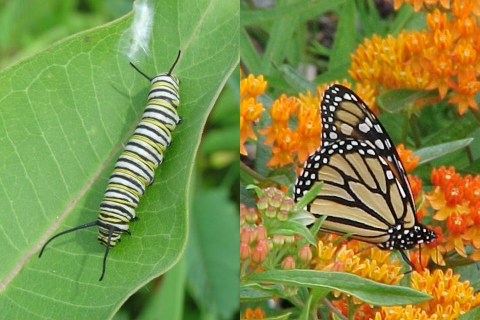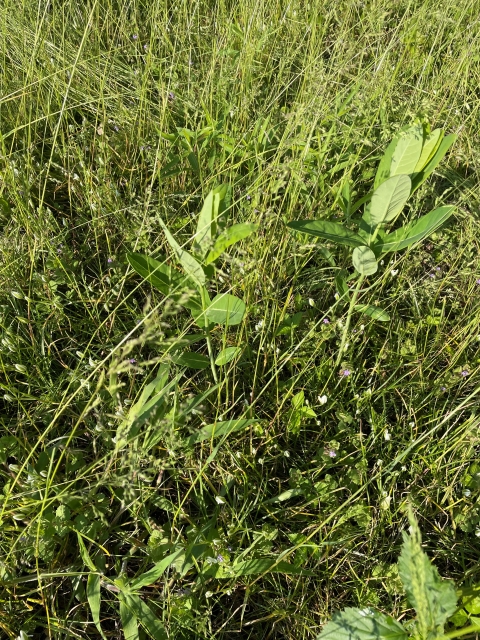The U.S. Fish and Wildlife Service works with many different partners to conserve and protect plants and animals. One of our most successful partnerships is with the Department of Defense’s natural resource managers.
Many Department of Defense landscapes are unique and provide food and shelter to over 500 federally-listed plant and animal species, and over 500 species at-risk of needing listing protections, including 55 listed species that occur only on their lands. Healthy natural landscapes are critical to their mission.
The Department of Defense needs continued access to their land, air, and water resources to accomplish testing, training, and operational activities. Their natural resources programs support their installation’s readiness, but also invest in long-term conservation programs to sustain our nation’s priceless natural heritage.
Under the Endangered Species Act, all Federal agencies have a responsibility to conserve the ecosystems which endangered and threatened species depend upon. In addition, under the Sikes Act the Department of Defense develops Integrated Natural Resource Management Plans for the conservation and rehabilitation of natural resources on military installations.
As part of this year’s Earth Day activities, the Chesapeake Bay Field Office teamed up with nine military installations around the Chesapeake Bay watershed to promote conservation of pollinators like butterflies and bees. Biologist Sabrina Deeley coordinated with these installations to provide information and native plants to create or expand pollinator habitat, with an emphasis on the monarch butterfly.
The monarch butterfly (Danaus plexippus) is currently a candidate for listing under the Endangered Species Act. In 2021, the U.S. Fish and Wildlife Service and the Department of Defense agreed to explore developing a nationwide Species Action Plan for the monarch butterfly under the Recovery and Sustainment Partnership Initiative. One of the preliminary goals of this effort was to “improve the conservation status.” The U.S. Air Force Pollinator Conservation Strategy vision is to “sustain the Air Force mission and ecological integrity on Air Force lands; implement pollinator conservation practices to enhance habitat; and broaden awareness among Air Force personnel.” The supplemental U.S. Air Pollinator Conservation Reference includes the goals of “conserving pollinators of conservation concern” and “conserving pollinator habitat.”
Monarch caterpillars require milkweed to survive. Adult monarchs lay their eggs on milkweed plants (Asclepias spp.) and drink nectar from milkweed flowers, as well as other native flowers. Milkweed is toxic by nature and has a bitter taste. Because monarch caterpillars feed on milkweed, the toxin is stored in their bodies, and they too taste bitter, warding off predators. This mutually beneficial relationship helps to define why milkweed is so critical to the monarch’s survival. The milkweed protects monarch caterpillars, and the adults help pollinate it, allowing milkweed to persist over generations. Other plants such as goldenrods flower in the fall, providing a critical nectar food source for migrating monarchs.
By providing technical expertise and 250 specific native flowering plants like milkweeds and goldenrods (Solidago spp.), Service biologists made it easy for various military installations to create pollinator habitat in areas not currently being used for operations. Personnel and volunteers at the facilities did the rest. Here’s a few of the Earth Day and pollinator habitat projects that resulted:.
Fort George G. Meade, Anne Arundel County MD
Flowering trees, milkweed and goldenrod plants were planted along a shoreline that was simultaneously certified as monarch butterfly habitat. Earth day event attendees also received guidance and milkweed and goldenrod plants to take home to start their own home pollinator gardens.
Naval Support Facility Indian Head, Charles County MD
Milkweed plants were planted at both a tidal and non-tidal wetland. To increase tree canopy, four native trees - persimmon, willow oak, and white oak - were also planted. To wrap things up, 90 active duty military and civilians conducted a beach clean-up along approximately 0.75 miles of shoreline of the Potomac River.
Joint Base Andrews, Prince George’s County MD
Joint Base Andrews installation already has a rain garden that captures and filters runoff from their parking lot. Staff planted the swamp milkweed, which can tolerate wetter conditions, around the outside of the rain garden. The remaining common milkweed and goldenrod were planted alongside the building.
Delaware National Guard New Castle County, DE
Pollinator habitat plantings were done at two sites: one a former agricultural field that has been allowed to flourish as a meadow through a reduced mow cycle until future construction and another at a nearby training site.
Aberdeen Proving Ground Blossom Point Research Facility, Charles County MD
Personnel from Blossom Point Research Facility and the Environmental Division planted swamp milkweed plugs to provide critical food for the monarch butterfly in celebration of a combined Arbor Day and Earth Day event. The event also featured numerous booths and activities highlighting the widespread environmental initiatives at Aberdeen proving Ground and handouts on how everyone can contribute to a safer and cleaner future.
In addition, Naval Research Laboratories in Calvert Count, Naval Air Station Patuxent River in St. Mary's and Naval Support Activity Bethesda Montgomery Counties in Maryland and Dover Air Force Base in Sussex County, Delaware also received and planted native flowering plants to support pollinators visiting their facilities. We salute these men and women for protecting our country and its wildlife!






